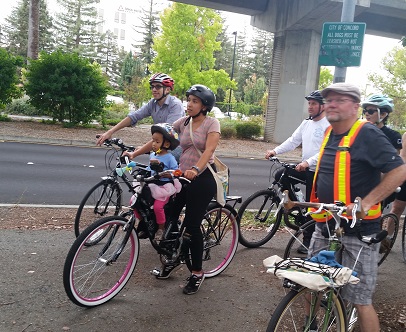 Project Timeline
Project Timeline
December, 2014: Following Council approval, staff will initiate a recruitment of the at-large and alternate positions for the PAC through January 9, 2015
January, 2015: Consultant begins work on examining existing conditions. PAC members will be appointed by the Planning Commission, PROSC, and Infrastructure and Franchise Committee.
March, 2015: A city-wide survey to evaluate community needs will be conducted to support the plan. The PAC begins meeting at regular intervals.
Second Quarter, 2016: Release of the final draft Master Plan and CEQA analysis for public comment.
Summer, 2016: Estimated Planning Commission and Council consideration of Master Plan adoption.
What’s a Bike Plan and Why is it Important?
A Bike and Pedestrian Master Plan is a city’s blue print. It directs planning staff’s work in the long term, helping build a coherent and complete network of bikeways through a city.
A good bike plan will contain, amongst other things:
- Innovative, forward thinking concepts
- A complete network that considers all types of bicyclists, whether leisure riders, novice riders, expert riders, commuters, etc.
- An implementation plan
The city of Concord does not have a previous Bike and Pedestrian Master Plan to update or base their work on: this is a great opportunity to get a fresh start on building a safer, better Concord for bicyclists.
How to Get Involved
The City of Concord is committed to making this a community-driven process with many venues and opportunities for input. Attend a Plan Advisory Committee meeting on the 4th Monday of the month, check back here or on Bike Concord’s Facebook group for upcoming events.
Funding
Total funding for this project is $300,000.
$100,000 comes from a Transportation Development Act (TDA) grant awarded by the Metropolitan Transportation Commission (MTC) in June of 2013.
An additional $200,000 of grant funding was later secured with a second grant through the MTC’s competitive Regional Measure 2 (RM-2) Safe Routes to Transit grant program, which was accepted by the Council on July 22, 2014.
Who is Involved with the Plan?
The city has hired Alta Planning + Design, Inc. (Alta), to lead the project. Alta will be assisted by Kimley-Horn as a sub-consultant,
an engineering firm with past experience working with City of Concord.
The City’s proposal for the Safe Routes to Transit grant included a partnership with the Contra Costa County Health Services Department (CCHS) and Monument Impact organization to help lead the public outreach program which began over this past summer. In addition,
students from Cal Poly University’s Urban and Regional Planning Department were hired to conduct bicycle and pedestrian traffic counts, which were completed in May.
Finally, the city has established an ad hoc Bicycle and Pedestrian Advisory Committee (BPAC) to assist with the direction of the plan. Our hope is that at the end of the plan and as part of its implementation, the BPAC will become permanent.
On March 3, City Council finalized its appointments to the BPAC:
- Vice-Mayor Laura Hoffmeister as committee chair.
- Parks, Recreation, and Open Space Committee member Mark Sinclair.
- Planning Commissioner John Mercurio.
- At-large member Sergio Huerta.
- At-large member Claire Linder.
- Alternate at-large member Randy Marsh.
- Alternate at-large member Kenji Yamada.


